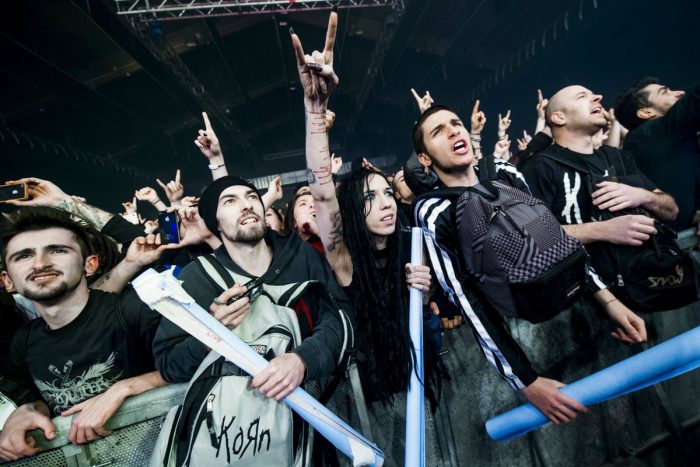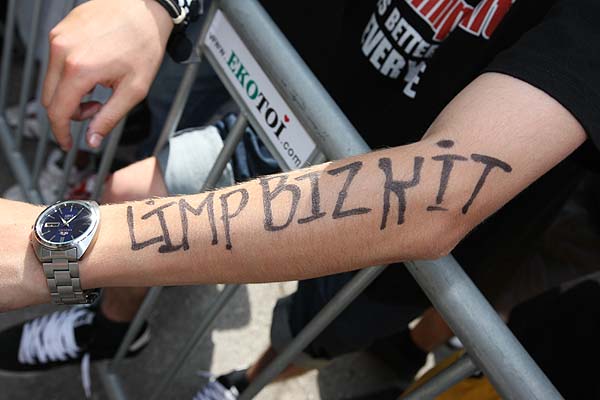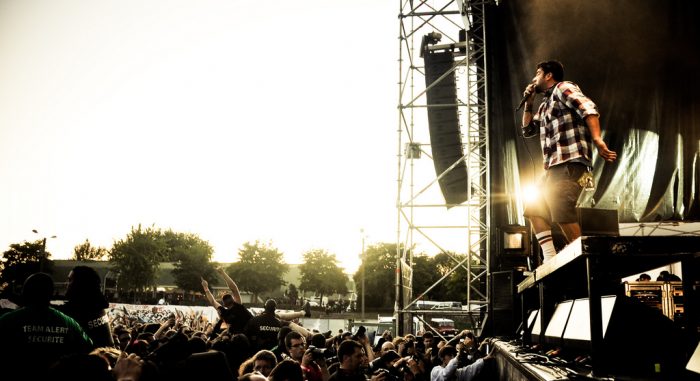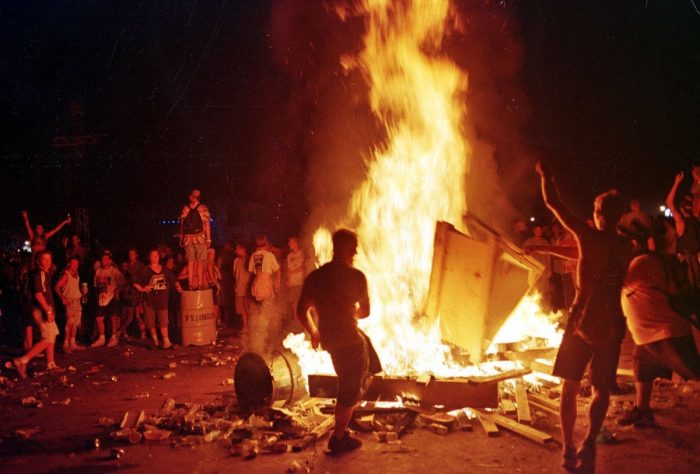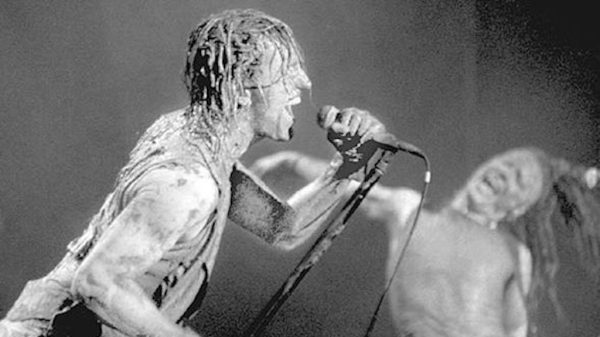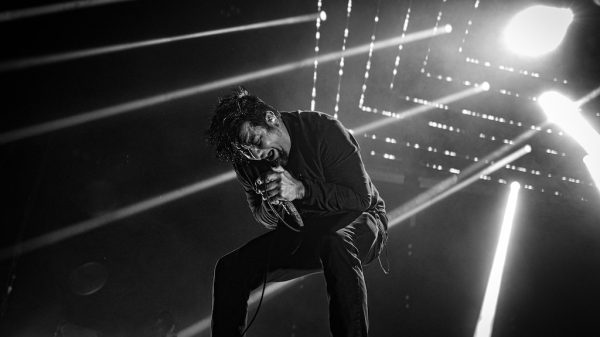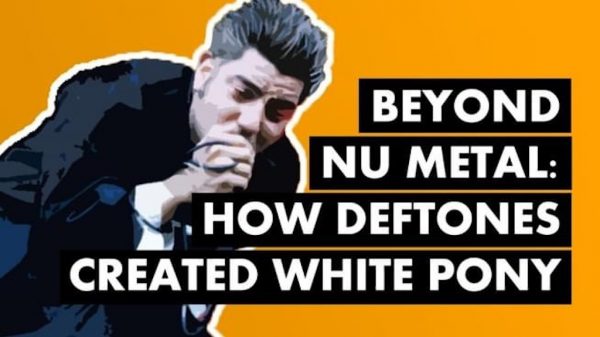The easy thing to do here would be to try to redeem Nu-Metal.
To try and convince myself and then you, dear reader, that, I don’t know, System of a Down’s album Toxicity sounds as good now that I’m thirty as it did when I was sixteen, when I’ve heard everything from Isis to Sunn 0))), Revenge and The Body since. Maybe to situate it within the long history of heavy music, finding in Mudvayne’s second album, The End of All Things to Come, the DNA of Metallica, Death, Black Sabbath, Alice fucking Cooper, Richard fucking goddam Wagner. Perhaps I’m going to tell you to ignore KoRn and Linking Park – the real genius of Nu Metal is in Nothingface, Chevelle, Dope, Guano Apes.
But look, Nu Metal really was a garbage fire. There are a handful of Deftones songs that are quite enjoyable and that really is it. Song for song, it loses out to drug-fucked Decline of Western Civilization Part 2: The Metal Years hair rock, which, if nothing else, can be enjoyed ironically. Try playing Motley Crüe’s ‘Girls, Girls, Girls’ and Limp Bizkit’s ‘Nookie’ back to back in public and note the reaction.
However, there is a generation, and I’m a part of it, that found heavy music through Nu Metal and circled back to find the records we missed at the time: Acid Bath’s When The Kite String Pops or Sabbat’s Fetishism. The first band I saw live? KoRn. In fact, not even KoRn, but their support band P.O.D. Various bands may have been your way in: Marilyn Manson during a tween-goth phase, Slipknot if you were late to the party, Hed P.E if… well, nobody liked Hed P.E, but my point stands: in the late nineties and early two-thousands, if you were mostly white and male, if sports and girls weren’t an option for your ectomorphic frame, but you still had too much testosterone for Tori Amos, then you were probably into Nu Metal.
Part One: Are You Ready?
In the early to mid nineties, the world wasn’t in any need of new metal, but it got Nu Metal. Nu Metal didn’t arrive to reinvigorate a tired musical scene. It wasn’t a surge of black bile from the underground that drowned out corporate stadium rock. It became the corporate stadium rock as quickly as grunge had just a few years before.
In 1994, when the three bands that defined the genre – KoRn, Limp Bizkit and Deftness – formed and released their first albums, grunge had peaked and hard rock was long gone, but Black Metal was having one of the greatest years in its history: Darkthrone’s Transilvanian Hunger, Emperor’s In the Nightside Eclipse, Mayhem’s De Mysteriis Dom Sathanas, Burzum’s Hvis Lyset Tar Oss. Even bands who would later go on to become punchlines, like Cradle of Filth and Dimmu Borgir, released passable records. Death Metal fans were well served too: Carcass released their masterpiece Heartwork; Tiamat put out the divisive, perplexing, Wildhoney; Obituary went environmentalist on World Demise; Cannibal Corpse, Napalm Death and Bolt Thrower all simultaneously toned down their grindcore sound without losing any of their savagery. There was also interesting stuff happening outside of genre orthodoxy: Nine Inch Nails’ The Downward Spiral bought industrial closer to the mainstream; Kyuss released their career best Welcome to Sky Valley; Helmet’s Betty delivered on the promise of Meantime; Merzbow put out Venereology and Flare Gun; the Melvins recorded Stoner Witch.
Two bands who will need no introduction, Faith No More and Rage Against The Machine, were cited as influences by just about every Nu Metal band, though a lot of what made both bands interesting ended up on the cutting room floor. Rage’s far left politics never came up in the Nu Metal world, which aside from System of a Down’s vague ‘the government is bad sometimes’-isms, remained apolitical. Faith No More were, and remain, equally experimental and gleefully quirky, able to record albums where the songs ‘Crack Hitler’ and ‘Jizzlobber’ nestle alongside a reverent cover of the Commodore’s ‘Easy’ and the theme to Midnight Cowboy. The vocal talents of Mike Patton (who might just be the best technical vocalist in all of extreme music) and the songwriting of Billy Gould and Roddy Bottum were never to be equalled by the bands they inspired (though Deftones came close). Ministry, Voivod and Primus are also frequently mentioned, though it’s difficult to hear much of any of them in the band who started it all.
KoRn came out of Bakersfield, California, an agriculture and oil town a hundred miles of desert away from anything interesting. Several members had already been in the band LAPD when they recruited vocalist and bagpiper Jonathan Davis, whose confessional lyrical style and extra-metal influences (he cites Duran Duran as his favorite band and currently has an EDM side-project, JDevil) set the template for the genre to come.
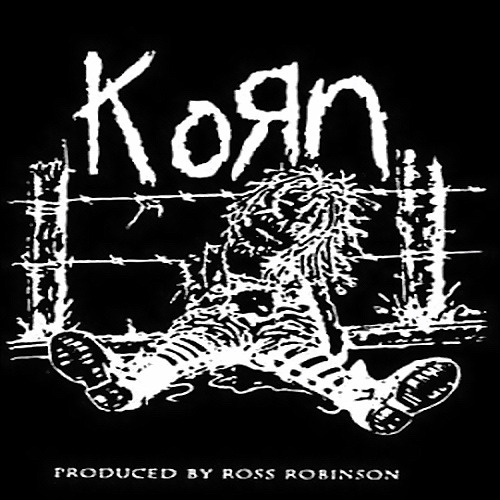
Though they recorded a demo album, Neidermayer’s Mind, in 1993 and landed a record deal with Epic records imprint Immortal, ‘94 saw the band release a self-titled album that stands as one of the most influential records of its decade. Like the Sex Pistols’ Never Mind the Bollocks or Nirvana’s Bleach, it didn’t sound like anything else out there, though it wasn’t in any way avant-garde. Davis et al. weren’t art-school dropouts experimenting with the sounds of the next ten years in East Village lofts, they were just some relatively dumb white guys who managed to live lives balanced between oxycontin and face tattoos on one side and 9-5 McWork on the other. Davies was, by his own admission, a crystal meth addict during the their first album’s recording, and had left his high paying job as a mortician.
‘Blind’, the first song on Korn and, for a lot of people, the first song in Nu Metal, starts interestingly enough. David Silveria taps out a rhythm on the hi-hat whilst in the background James “Munky” Shaffer, Brian “Head” Welch and Reginald “Fieldy” Arvizu circle around the song’s main riff. It’s like they’re practicing, warming up, and their songwriting skills and naturally chemistry are such that after thirty seconds of jamming they have a whole song. The riff itself is huge, and even when you know the context it’s still a series of chords that will make you want to tune a seven-string guitar to D just to play it yourself. Then Davis asks the listener if they’re ready.
The video is revealing. Mostly, it’s typical early nineties low-budget pabulum, not unique enough for Beavis and Butthead to snigger at, but on closer inspection there’s metal musicians wearing sportswear, looking like those kids in school who discovered Jay-Z, like, yesterday and now think that they can use the N-word. There are people moshing, but what are they doing on the song’s sedate chorus? Do they pick a partner and slow dance?
The remainder of the album didn’t have ‘Blind’s impact, or that riff, but there were interesting moments. On ‘Faget,’ Davies recalls being bullied at school and in doing so both establishes KoRn’s stereotypical fanbase, teenage boys, and inspires a misspelling of slur that remains popular to this day. ‘Daddy,’ the story of Davies’ molestation by a family friend, not his father as most assumed, ends with four minutes of him sobbing into the microphone. He is still reticent to discuss what happened to this day. If your previous exposure to metal was through Iron Maiden’s grand epics inspired by Romantic poetry, then this emotional honesty was refreshing. Four albums later, it was starting to wear thin, but we’ll cover that later.
Part Two: Blood Fart
Without KoRn there would be no Limp Bizkit. After the release of their debut album was met with little radio or MTV play, KoRn started touring relentlessly and they really connected with people. There was a strata of music fan between the ‘true’ fans of black/death metal or self-consciously avant garde stuff like Neurosis and casual listeners of pop, r’n’b and country. The same process was happening across the country in Jacksonville, Florida. Tattoo artist and lawn mower Fred Durst had been attempting to break into music for some time, and eventually was able to persuade bassist Sam Rivers and Rivers’ cousin John Otto to take him up on a project that combined rap with metal. They added guitarist/weirdo Wes Borland, whose theatricality and elaborate costumes were the draw that caused their crowds to go from eight to eight-hundred in a short time. Durst wasn’t helping: he chose the name to ‘repel’ listeners, and there’s some alternative reality out there in the multiverse where a band that sold millions of records was called ‘Blood Fart’ or ‘Bitch Piglet’. He was also impersonating the band’s manager to meet with record execs, but all of them wanted a name change before they’d sign the band. Covering George Michael’s “Faith” (because he’s gay LOL! GET IT?) and Paula Abdul’s “Straight Up” (because I don’t know) threatened to push them over the edge into Bloodhound Gang novelty rock territory, but then KoRn came through town.
The fabulous Bakersfield boys were supporting major-label hardcore act Sick of It All, and Durst, ever the self-promoter, got talking with them and ended up giving them tattoos and pressing a copy of the band’s demo into their hands. His hustle worked, because Limp Bizkit ended up touring with KoRn, twice, and after a show in Hollywood signed to Mojo, a subsidiary of MCA records.
They were only with Mojo for one album, 1997’s Three Dollar Bill Y’all, the title referencing the phrase ‘queer as a three dollar bill’, another ‘Hur-hur, gay’ moment from the band. The album was produced by Ross Robinson, who also served as midwife for KoRn’s first effort. As a producer, Robinson doesn’t exactly have a signature ‘sound’, despite his early recordings (including both KoRn and Limp Bizkit) being made in the retro-chic Indigo Ranch, which had also hosted Neil Young and Nick Cave.

With the record in the can it was time to promote it. There was touring to be done and videos to be made, but Mojo suggested a tactic that Durst was all too ready to agree to: just pay a record station to play the song. Portland’ KUFO took $5000 dollars (adjusted for inflation, a staggering $5003 dollars) to play the single ‘Counterfeit’ fifty times over five weeks. This is never okay, and Limp Bizkit’s managers claim that it was simply more cost-effective than traditional methods of generating publicity didn’t exactly ring true. Yeah, it’s often more cost-effective to cheat your way to airplay over bands that people might actually want to hear.
Three Dollar Bill Y’all is a multi-platinum record today, but only after Limp Bizkit’s second record, 1999’s Significant Other, and its singles ‘Nookie’ and ‘Break Stuff’ made the band into megastars. Their cover of ‘Faith’, with added guitar and a scratching solo by former House of Pain turntablist DJ Lethal, got significant radio play the old fashioned way, but not enough to move the needle to the point that Limp Bizkit could be considered a success. Touring and spots on the Warped Tour and Ozzfest increased their profile, although they were almost booted from the latter. When your fratboy bullshit is too much for Ozzy fucking Osbourne you really have to consider your choices. They didn’t have this to worry about when they appeared on the lineup of KoRn’s Family Values Tour alongside fellow first-wave nu-metallers Incubus (briefly, the band with the cute singer and very little to be angsty about) and Orgy (now forgotten new-wave revivalists who did a cover of New Order’s ‘Blue Monday’ and little else), Ice Cube (who I’m guessing may have lost a bet) and perennial guilty pleasure Rammstein, whose singer and keyboardist ended up in jail for simulating anal sex during the song ‘Bück dich’.
Part Three: Madonna
Deftones are something of an outlier here. If KoRn had never happened, they might now be considered a populist but still talented post-hardcore band, with a sound comparable to Quicksand (whose bassist would join the band to replace original bassist Chi Cheng, who was left comatose in a car accident in 2009 and finally succumbed to his injuries in 2013.)
Like Limp Bizkit, we know of them today because of KoRn’s patronage. Childhood friends from Sacramento, into skateboarding and weed, they were a natural fit for the down-to-earth, regular guy with problems vibe that Nu Metal was cultivating to set itself apart from the insular and elitist hardcore scene.
At a show in Hollywood, they impressed an A&R rep for Maverick Records, a Warner brothers imprint set up by Madonna and two record-industry insiders that also put out Alanis Morrisette’s Jagged Little Pill. It was as far from hardcore cred as you could get, while the songs themselves weren’t as immediately accessible as ‘Blind’ or ‘Counterfeit’. Their album Adrenaline struggled as much as Three Dollar Bill Y’all had, despite generally positive reviews when compared with their contemporaries, and like Limp Bizkit relentless touring, two full years on the road, was able to win fans around. The album finally went platinum in 2008.
Looking back, lead single ‘7 Words’ and ‘fan-favourite’ ‘Engine No.9’ are Nu Metal by the numbers, but the single ‘Bored’ shows the potential that they would sometimes realize. Singer Chino Moreno croons in heavily accented English, Stephen Carpenter plays a simplistic, primal riff before the whole band kicks in on the choruses, bathing the whole song in guitars processed to the point that the notes become individual waves washing over the listener. Where Jonathan Davies’ lyrics were ham-fisted confessions and Fred Durst’s not worth the mental effort it takes to come up with clever ways to insult, Moreno’s were more like beat poetry, more concerned with tone and emotional resonance than whether the words, as individual units of meaning that combined form a narrative, made sense. Even the clumsy rapping on’ Engine No.9′ is nonsense woven from all the macho bullshit overheard on Sacramento streets.
Ultimately, Deftones would surprise on one song and disappoint on the next. They’d release a song as darkly beautiful as ‘Change (in the house of flies)’ (from 2000’s White Pony) and their next release would be ‘Back to School (Mini Maggit)’, with more bad rapping and their clearest lyrics to date, a reminiscence about school days with as much bite as the Saved By The Bell theme.
There were other bands of course. Incubus and Orgy we have mentioned, but plenty more bands were, like Rammstein, not Nu Metal but at least Nu Metal adjacent. White Zombie, for instance, or Type O Negative, Sepultura vocalist Max Calavera’s Soulfly side-project (he sung backup vocals on several Deftones tracks), and Marilyn Manson, who both preceded and hated the genre, but often found himself sharing stages and fans with Addias tracksuit-wearing lunkheads. Snot, Dope, Coal Chamber, Sevendust and System of a Down can all be considered part of Nu Metal’s first wave (the second, which started with Papa Roach, Disturbed and System of a Down, we’ll get to later).
Part Four: It Should All Fall Apart, But Doesn’t
Looking at the lineup for Woodstock ‘99, you’ll be struck by a singular realisation: this is the shittiest group of musicians ever assembled. And George Clinton.
Dave Matthews Band was sandwiched between Alanis Morrisette and Counting Crows. Willie Nelson was placed in a line-up far below Jewel and Creed. James Brown played second support act to Jamiroquai. The Manson family and the Hell’s Angels at Altamont may have killed the Hippie dream, but Woodstock ‘99 made sure that a new generation knew that absolutely everyone is awful and there isn’t one shred of hope on this entire planet.
Only a few years after their debuts, and with their much more successful follow-ups Follow The Leader (a video from which earned KoRn a Grammy) and Significant Other still bothering the Billboard charts, KoRn and Limp Bizkit were placed high on the bills: KoRn only lost out to Bush for a headlining slot, Limp Bizkit came on before Rage Against The Machine and Metallica. They had arrived.
Woodstock ‘99 became synonymous with bro’d out Nu Metal fans tearing apart barriers and raping crowd surfers (police investigated four instances of rape alleged to have occurred during the festival, reported by eyewitnesses at both KoRn and Limp Bizkit’s shows, and as with any cases of sexual violence, the real number is likely to be higher). In truth, the violence peaked during the Red Hot Chilli Peppers’ set, and came after days of heat and high prices that MTV’s Kurt Loder compared to a ‘concentration camp’ after he and his crew were forced to flee the scene. Fred Durst even pleaded with his audience to be civil while the Chilli Peppers’ Anthony Kleidis complemented the rioters on how nice their bonfires looked. Nobody was killed, but there were numerous injuries and arrests.
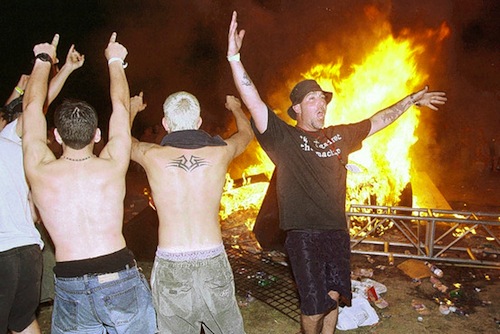
If it happened today, with social media able to sink careers in hours (James Deen, anyone?), maybe both bands would have faced some kind of pushback. They didn’t, and though Follow The Leader and Significant Other represented their critical and commercial peaks, they continue to release records that sell more than a dozen of the bands featured on this site combined.
If you’re on this site and have read this far, then you don’t need to be told that extreme music, done well, can hit emotional and intellectual peaks that few other forms of music can. It can address political, social and sexual themes that would be too weighty for rock or even punk, and in not being in any way a safe space, artists can go as far as they need to make a point. It has a high barrier to entry, a labyrinthine history of genres and church burnings combined with often deliberate obscurity, and what Davies and Durst did that has me writing about them twenty years later is remove that barrier completely (today, people complain that ‘hipster metal’ has done the same thing). When suburban or rural white boys needed to see their anger reflected in music, they couldn’t turn to country or hip-hop, at least not completely, and underground music meant a steep learning curve and social isolation. With Nu Metal, you could have your catharsis and wear the same sportswear as everybody else, even if you did come to accent it with Hot Topic accessories.
You know all those stories, from Prometheus up to the shitty Alien prequel Prometheus, where somebody takes something incredibly powerful that they really shouldn’t have and it ends badly for them? It was like that, and though Woodstock was its peak in terms of actual human suffering, in purely musical terms, the worst musical genre on earth was about to get worse.
Join me in Part Two, when bodies may or may not hit the floor.


